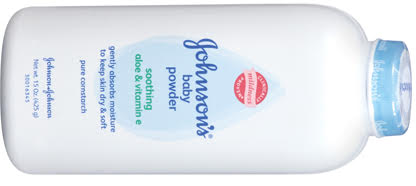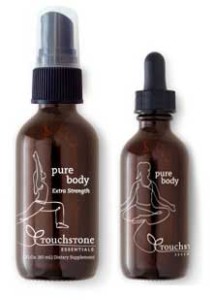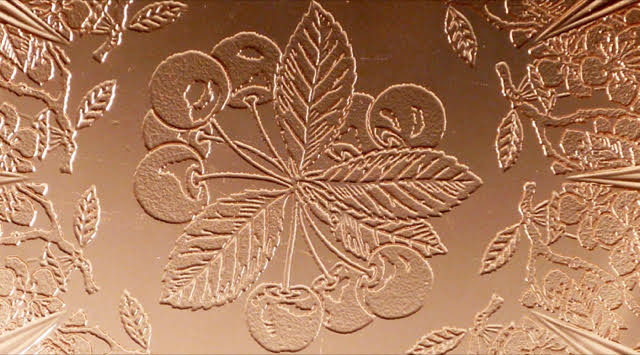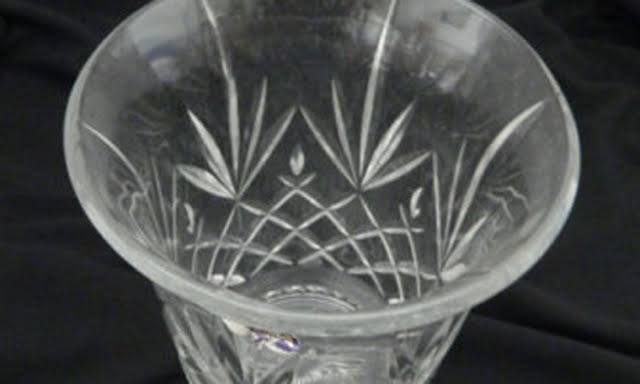
Submitted questions will be posted with my response by the following Tuesday or before.
Submitted comments will be moderated and approved within 24 hours.
Pesticide Exposure at the Pumpkin Patch?

Question from Jo
Hi Debra,
Can I get your advice on this? You’re the only one on the web, that I actually feel that is so knowledgeable and honest!!
So daughter just turned 4 years old, and her teacher has planned a trip to the farm that has a pumpkin patch and petting zoo. I called the farm and they use an IPM program, but say they will use pesticide spray when needed. So they aren’t fully organic, but they call themselves sustainable.
I worry that my daughter can touch the pumpkins or anything with residue and they will be eating lunch there, so that’s hand to mouth.
Would you recommend me sending her or maybe keeping her home. I’ve had 2 aunts pass away from childhood leukemia, and I know there’s a link with pesticide.
I worry so much, but I really don’t want to bother the teacher. I’ve already haggled her about shutting their ionic (Plasma) air conditioner off and just running the air conditioner without using the ionic function. (She’s probably so annoyed with me by now) hahaha
Any assistance would be WARMLY appreciated! 🙂
Debra’s Answer
You actually don’t need to worry about this. One exposure to pesticides doesn’t make that much of a difference. Since they are IPM they may not even have sprayed. Let her go and have fun.
There was actually a study that showed if children ate 100% organic for only three days, all the pesticide residues were gone from their bodies. The problem is eating non-organic food every day. Then your child’s body is full of pesticides on an ongoing basis. But it takes only three days to clear.
I eat almost 100% organic at home, but I also travel and then I eat as much organic as I can, but 100% is difficult. I’m about to drive cross country for 9 days from Florida to California and I’m already scoping out restaurants that serve organic food and places where I can buy organic food enroute. We’re going to bring some food with us too.
While certainly there are what are called “acute” exposures that could kill you immediately (this is why we have poison control centers), but for what are called “cumulative” exposures, such as pesticide residues, it’s what you do most of the time that counts. Feed your daughter organic at home and what pesticide residues she may encounter elsewhere will leave her body quickly.
All that said, please don’t misunderstand me. Pesticides ARE toxic. Don’t spray your daughter with pesticides thinking they are safe. But occasional RESIDUES…I’m of the opinion that pleasure in life contributes to health and sometimes we need to weigh the benefit with the risk.
I’ve been to pumpkin farms and I haven’t experienced them to be a place I need to avoid.
I’m flying on an airplane this week. That’s a lot more toxic. And at the other end I’ll eat in an organic restaurant.
Organic Mattress encasement for Dust Mites

Question from Sherry
Hi Debra,
Per your recommendation, I have purchased a Naturepedic mattress and want to find a mattress encasement to protect the mattress and prevent dust mites. Can you please recommend a mattress encasement.
I see that Naturepedic offers a waterproof mattress pad, but it does not encase the entire mattress. Also, I can concerned about the Naturepedic mattress protector because it has a layer of polyurethane for its waterproofing. I have recently learned that polyurethane foam is toxic and am in the process of trying to remove it from my house. Should I be concerned about the polyurethane in Naturepedic’s mattress pad? Thank you again for all of your help and support! You are an inspiration!
Debra’s Answer
Polyurethane itself is NOT toxic, polyurethane FOAM is toxic because of other chemicals added to it to make foam and to make it fireproof. So no problem with the very thin membrane of polyurethane in Naturepedic’s mattress protector pad.
Here are some recommendations for mattress encasements that protect against dust mites. They are not waterproof.
THE CLEAN BEDROOM Organic Cotton Dust Mite Mattress Encasement
JANICE’S Organic Cotton Barrier Cloth Mattress Covers
JANICE’S Organic Cotton Mattress Covers
Toxicity of 3D Printing

You may have heard of a new type of printing called “three-dimensional (3D) printing.” Instead of printing ink on a piece of paper or plastic, the 3D printer actually makes a three-dimensional object. These printers are now available for home computers (starting at only $283), so you can now manufacture virtually any shape for any use right in your own home.
When I first saw this on TV several years ago, once I got over my disbelief my first question was, “What material are they using to make these objects and is it toxic?
Recently others have been asking this question too, and there is starting to be some research results to look at.
The majority of desktop 3D printers designed for the consumer market use a technology called fused filament fabrication (FFF), also known as molten polymer deposition (which sounds more descriptive to me). In this process, a slender thread of solid thermoplastic is melted and deposited in thin layers onto a moving bed. The three-dimensional solid shape is formed layer-by-layer as the plastic material cools and hardens. That makes logical sense to me, but the first time I saw it, it looked like magic.
A wide variety of filament materials are now being used in desktop FFF 3D printers, including
- acrylonitrile butadiene styrene (ABS)
- poly(lactic acid) (PLA)
- poly(vinyl alcohol) (PVA)
- polycarbonate (PC)
- high-density polyethylene (HDPE)
- high-impact polystyrene (HIPS)
- nylon
- and many other polymers, metals, ceramics, and other materials.
Filaments are melted at a variety of extruder nozzle temperatures and bed temperatures, and manufacturers typically recommend ranges of optimal temperatures for each filament material and thickness. These varying temperatures affect the amount of volatile organic chemicals (VOCs) and particles that might be released from the materials as well as their toxicity.
Two studies have generated quite a lot of data on this subject, which I’m not going to attempt to summarize here.
I just do want to mention that one study identified gasses that were released, which included ammonia, cyanidric acid, phenol, and benzene, among others.
Overall, lab tests showed that ABS is significantly more toxic than PLA, but the corn-based PLA had it’s own emissions when extruded at temperatures higher than 392 degrees F. This is important to note because there are many finished consumer products made from PLA that would not have emissions because they are at room temperature.
It was also noted that the same material spools, when acquired from different resellers, release very different quantities of VOCs, even if used in the same 3D printer and under the same parameters of speed and temperature. So there is a wide variation of air pollutants that could be present as the result of using a 3D printer.
Health effects mentioned were pulmonary problems, such as bronchitis, tracheitis, and asthma. In some cases, outgassing substances were known cause certain types of cancers.
Researchers recommend using 3D printers in a well-ventilated area.
3D PRINTING INDUSTRY: How Toxic are ABS & PLA Fumes?
3D PRINTING INDUSTRY: Gas evolution during FDM 3D printing and health impact
$417 Million Awarded in Baby Powder Suit—Talc Connection to Cancer

On Monday a Los Angeles jury ordered Johnson & Johnson to pay $417 million in damages to a woman who developed ovarian cancer after using their trademarked baby powder for decades.
Many women use baby powder in their genital area for the same reason it’s used for babies.
Studies linking talc to cancer date back to 1971, when particles of talc were found embedding in ovarian and vertical tumors.
In 2006 the International Agency for Research on Cancer classified talcum powder as a possible human carcinogen if used in the female genital area. No efforts have been made to remove this product from the market or require warning labels.
Talc is a naturally occurring clay mineral composed of magnesium and silicon. It occurs in proximity to asbestos. While talc itself does not cause cancer, it is often contaminated with bits of asbestos. a known human carcinogen.
If you use baby powder, choose a brand made with cornstarch or other ingredients instead of talc.
THE NEW YORK TIMES: $417 Million Awarded in Suit Tying Johnson’s Baby Powder to Cancer
Women of Color Exposed to More Toxic Chemicals in their Beauty Products than white women

According to a commentary published last week in the American Journal of Obstetrics and Gynecology, women of color have higher levels of chemicals in their bodies related to exposure through beauty products than white women. The authors say even small exposures to these toxic chemicals can lead to health problems.
“Pressure to meet Western standards of beauty means Black, Latina and Asian American women are using more beauty products and thus are exposed to higher levels of chemicals known to be harmful to health,” says Ami Zota, ScD, MS, an assistant professor of environmental and occupational health at Milken Institute School of Public Health (Milken Institute SPH) at the George Washington University.
Mercury in Processed Foods and Other “Indirect Additives” in Manufactured Food Products
This week a video arrived in my email inbox about a study in which mercury was found in a number of processed foods contain high fructose corn syrup.
They don’t intentionally add mercury to high fructose corn syrup, but it is an “indirect additive” that enters food as a result of processing natural corn into the industrial product high fructose corn syrup.
Watch this video for more about mercury in high fructose coren syrup
But mercury isn’t the only indirect additive found in processed foods.
The US Food & Drug Administration (FDA) has a whole of indirect additives at
List of Indirect Additives Used in Food Contact Substances
You can view the list of 3227 chemicals that are allowed in processed food products at the above link, and also search on chemicals you know to see if they are on the list. Formaldehyde is on the list, and so are styrene, phthalates, polyurethane resins, and many more chemicals we know to be toxic.
And none of these indirect additives are required to be on the packaged food label.
According to the FDA:
indirect food additives…are substances used in food-contact articles, and include:
- adhesives and components of coatings (Part 175)
- paper and paperboard components (Part 176)
- polymers (Part 177) and
- adjuvants and production aids (Part 178).
In general, these are substances that may come into contact with food as part of packaging or processing equipment, but are not intended to be added directly to food.
Additional “indirect” additives that are effective as part of the food contact substance notification program or that are exempted from regulation as food additives in accordance with 21 CFR 170.39 “Threshold of Regulation (TOR) exemptions for substances used in food-contact articles.” are listed in separate inventories.
This is why we need to grow or purchase our own raw foods and prepare them ourselves at home. Doing so eliminates all these indirect additives that enter foods through industrial processing.
YOU CAN’T ESCAPE MERCURY. THAT’S WHY I DETOX FOR MERCURY EVERY DAY.

Mercury is in many products we use every day and even in the outdoor air. We can’t escape it. So it’s likely that your body has built up a store of mercury and possibly other heavy metals that could be affecting your health.
Once mercury and other heavy metals enter your body, it is very difficult for your body to remove them.
That’s why I take PureBody Liquid Zeolite every day. This natural mineral is uniquely suited to remove heavy metals. Tiny bits of negatively-charged zeolite act like little magnets to attract positively-charged particles—which include 99.9% of heavy metals, radiation, and organic chemicals–so they can be removed from your body via your kidneys. It’s simple, effective, and affordable.
Is It Toxic to Eat Off Depression Glass?

Question from TA
Hi Debra,
I’m wondering if you’ve ever looked into whether “Depression glass” is toxic to eat off of.
I have a set that was gifted to me years ago; it was a collection that was built up over time, just as a collection, not for actual use.
I am now wondering whether it is okay to eat off of, so I just did an internet search and feel unclear about the answer.
The answers from people who sell and collect depression glass is that it is safe; they mention uranium in some colors, arsenic in others…but it’s safe they say because it’s a tiny amount, it’s bound up in the matrix of the glass, and so forth.
Hmm. That also doesn’t really answer anything about my actual collection, which is pink.
But what concerns me more is whether there is lead in it. I found some info about there being two options in depression glass production — one containing lead and one not (but this no-lead option might have contained other undesirable ingredients).
Of course I would avoid lead crystal, but that doesn’t appear to be what they’re talking about in some instances, and it’s not clear to me whether other colors might have also contained lead to add to the clarity of the glass.
So overall it left me confused, and I just wondered if you’ve looked into this and can tell me anything definitive.
I don’t want to trash it without knowing anything for sure, given that it was a gift and it’s lovely to look at. But of course I don’t want to eat off of it — or donate it to Goodwill or sell it — if it contains lead or is otherwise harmful. If it were one cheap saucer or something I’d just throw it out (I’ve generally done that when it’s something I’m not sure about and don’t want to send it to Goodwill to lead-poison someone else’s child); but it’s a whole set and a collectible, so I’d rather know something before just getting rid of it.
Debra’s Answer
My general rule is when in doubt, err on the side of caution.
It may be true that there is so little uranium or arsenic in the glass that it’s not a problem. But the other side of the coin is not a problem for who? Age and body size can make a difference in how toxic it is to an individual person as well as the condition of their detox system and the health of their body as a whole.
Short of having the pieces analyzed for their content, we really don’t know if the glass contains something to be concerned about.
We do know from lead crystal that minerals can leach out of glass into food and then into bodies when the food is eaten.
Myself, I wouldn’t eat off depression glass, but wouldn’t have a problem keeping it to enjoy it’s beauty.
Crystal Vases and Bowls

Question from TA
Hi Debra,
I know that lead crystal is harmful in that one shouldn’t eat or drink from it. But is there any concern about having it in the house in general?
For instance, if there is a vase or decorative bowl, could a person end up with lead on their hands from handling it, or could dust end up with lead in it?
I know that this can happen if a person is handling dishware that has lead glaze, for example, but I’m wondering if it’s the same for something like lead crystal, or is the lead more embedded or something, so that it doesn’t transfer?
I have some that was gifted to me years ago, and it isn’t really in use in my home so I thought of giving it away or selling it as part of a decluttering process. But similar to my other question about depression glass , I don’t want to give away or sell something that could be harmful to another household; but if it’s safe for general use (decorative, really), I’d rather give or sell rather than throw it out.
I also have a set of crystal candlestick holders for taper candles; those could potentially end up on someone’s dinner table which makes the question more important. Of course, I really don’t know what the end use would be if I did sell it, so perhaps it is better to just throw it out so that no one could be unknowingly poisoned if they aren’t aware of the issues (if there is in fact an issue with this type of decorative items). I just hate to throw out a beautiful heavy vase and these other items if it’s safe to use them for those purposes.
Debra’s Answer
Lead is a particle and it does not outgas from glass in the same way a vapor outgassed from plastic. So lead crystal sitting on a table has no danger at all.
Also, you can handle lead and it is not absorbed through the skin.
But lead does leach out of glass into liquids and foods, then you can be exposed to lead through eating the food or drinking the liquid.
There are other exposures to lead, but this is the answer to your specific question.
Craft Beer Brewers Consider the Effects of Beermaking

I read an interesting article about how and why craft beer brewers are finding “innovative ways to guard the water, soil, air and climate on which their businesses depend.”
Well, right there is something different than usual. We don’t often see the producers of products consider the environment on which their businesses depend. If this were common, our environment would be pristine.
Katie Wallace, assistant director of sustainability at the New Belgium Brewing Company says, “I ride my bike across the bridge every morning to the brewery. Underneath that bridge is the river that provides the water for our beer. We’re very connected to the resources that provide for us.”
This article outlines many things craft brewers are doing to protect the integrity of the environment from which their ingredients come. This is a great example for all industries.
New Study Shows People Would Buy Green Products—If They Had Enough Information

A new study, published in the Proceedings of the National Academy of Sciences, notes that Internet-based companies have the opportunity to help the environment if they would just tell consumers about their environmentally friendly choices.
Researchers found that consumers are willing to make climate-friendly choices when the options are available to them. Carbon footprints of products and services are often known to companies, but are not made known to consumers.
In experiment after experiment, consumers chose the green products when the information on the products was available to them.
I’m posting this study here because the same applies to companies providing information to consumers about how toxic or nontoxic their products are.
I just am having an experience this week with a website that is selling a product that appears to be nontoxic but there are no ingredients. An email asking directly for the ingredients produced a reply, but no mention of ingredients.
It shouldn’t be that hard to get information about products. This study shows that consumers are interested in having information so they can make informed choices.
THE WASHINGTON POST: People would buy green products – if only e-commerce showed them how







